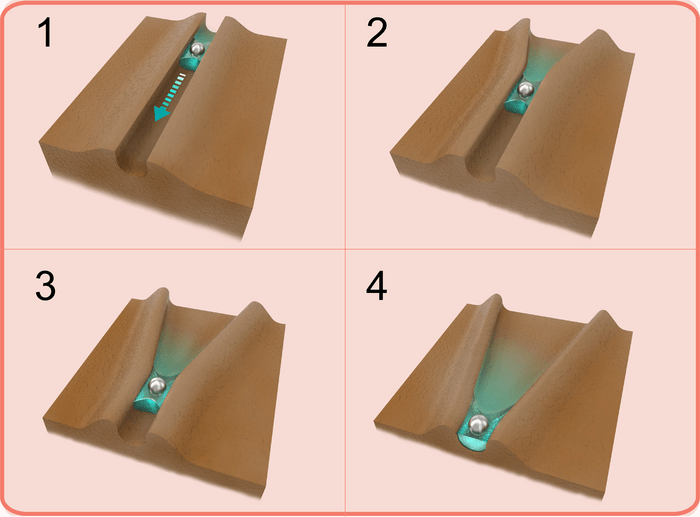ABU DHABI, United Arab Emirates — Humidity may be bad for your hair, but it could hold the answer to stopping water shortages! Scientists have discovered a method to harvest drinking water from thin air, just like desert plants and insects. This approach could potentially tap into almost limitless sources like fog and dew, naturally occurring in the environment.
Desert cacti collect moisture by trapping and absorbing water molecules with their spines. Similarly, certain beetles possess tiny grooves or bumps in their hard shells, which they use to channel wind into their mouths when they face the wind, a behavior known as “fog-basking.” Now, scientists have replicated this phenomenon using innovative energy converters called organic crystals.
“Our team has discovered a new way to move water across a dynamic solid surface, a fundamentally new underlying principle of water collection,” says Dr. Pance Naumov, Project Leader at New York University’s Abu Dhabi lab. “This can provide an inspiration for emerging technologies that could potentially maximize the efficiency of experimental systems used for the collection of humidity.”
“The findings may lead to the creation of naturally occurring sources of water such as dew and fog, used by some desert plants and animals for survival,” the researcher adds in a university release.
The research team achieved spontaneous condensation from vapor to liquid form by slowly moving water over the crystals. This movement was due to changes in the width of small channels that appear over time and guide water across the surface.
“The motion of water on solid surfaces is one of the most fundamental phenomena found in nature. Through millennia-long evolutionary processes, surfaces of natural organisms have been optimized for efficient transport of water for a variety of life-supporting functions. Plants have been seen to do this by moving water against gravity,” explains Dr. Naumov.
Organic crystals, a new class of materials, serve as energy converters for emerging technologies. This technology could potentially alleviate the impending global water shortages and hunger, expected to affect 1.8 billion people by 2025 due to the loss of fertile farming lands.

(credit: Courtesy of NYUAD)
The study describes a process where tiny particles of dust and metal were carried on the surface of crystals of hexachlorobenzene, a compound used as a fungicide. These crystals have a rigid topography with defined parallel channels, and the movement of water was found to be caused by condensed aerial water that migrates through the channels due to changes in their cross-section and width.
Previous autonomous water flow has been achieved using surface chemical modifications or on the surface of natural systems like some plants and insects. This recent work not only sheds new light on the water collection mechanisms of biological structures but also introduces a fundamentally different method of water transportation.
Given the fear that climate change will exacerbate water shortages by making dry regions drier and wet areas wetter, this new water harvesting technique could be a critical solution to a global crisis.
The study is published in the journal Nature Chemistry.
South West News Service writer Mark Waghorn contributed to this report.
You might also be interested in:
- Humidity-Powered Batteries? Water Vapor May Serve As Renewable Energy Source In Future
- Best Humidifiers For 2023
- Device makes seawater drinkable in minutes, possibly solving world’s freshwater shortage

